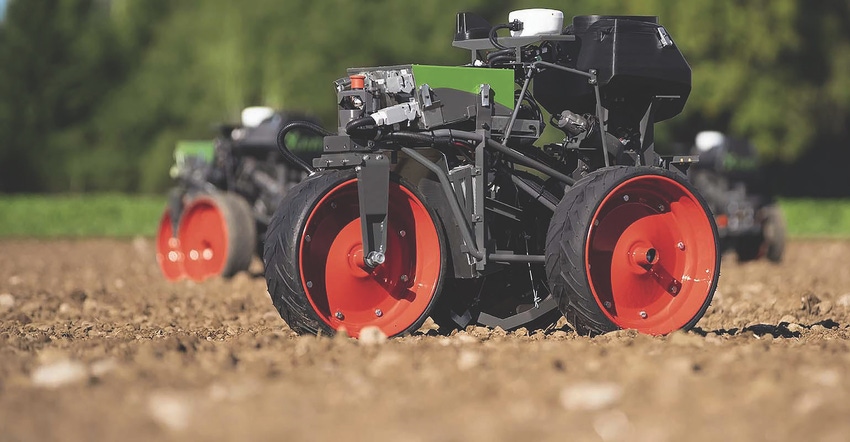
Ask any farmer what his top concerns for the future of agriculture are and farm labor will no doubt come up. Finding reliable help on the farm is becoming harder with each passing year. Could robots be the answer to this looming crisis?
“Robotics and automation are going to help us with lack of labor,” said Ed Barnes, senior director of agricultural and environmental research with Cotton Incorporated. “When we start talking about robotic farming it sounds crazy, but most of our producers are already running auto-steer tractors, so it’s really closer than we might think.”
Barnes spoke about opportunities for robotic systems and automation in cotton production at the recent Beltwide Cotton Conference, held virtually Jan. 5-7, 2021. He provided an overview of up-and-coming technology that could be available in the not-so-distant future.
Robotics at planting
Starting with pre-plant, Barnes walked his presentation viewers through the cotton season describing how emerging technology could be used. Rogo Ag, an Indiana-based ag-tech company, is already offering robotic soil sampling. This service utilizes an automated Bobcat to take grided soil samples, bag them and label them.
In 2020, Fendt Xaver updated its autonomous planter prototype. This system puts a “swarm” of small machines in the field planting as opposed to one large machine. While Barnes said he does not see this concept being broadly adapted by farmers in the near future, it could have more specific implications in areas like stand establishment.
“If we found gaps in planting, what if we could send a robot out to just fill those gaps in and not run the big planter across the whole field again? That’s where this technology could apply,” said Barnes.
Related: Fendt global lauch offers tech update
Cover crop planting is another area where small autonomous vehicles could be used.
“One of the challenges of a cover crop is getting it out early enough so you can get enough biomass,” said Barnes. “I’ve seen people experiment with putting spreaders on the back of a picker. I wouldn’t really want to do that to my picker, but what if we could have small autonomous vehicles go between rows before the cash crop is finished and plant a cover crop? Could similar technology also be used to sidedress nitrogen? That opens up a lot of possibilities.”
Weed management
WeedSeeker spot spray technology was up-and-coming 20 years ago but didn’t make much headway commercially due to largescale adoption of Roundup Ready crops. Of course, that’s all changed now.
“At the time, WeedSeeker was demonstrated in cotton to reduce herbicide applications in some cases by 90%, but Roundup was cheap and effective, and it just didn’t make economic sense to adopt that technology at that time,” said Barnes. “Now that’s changing rapidly.”
Swarm Farm, an agricultural robotics company in Australia is currently pairing Weed Seeker technology with their autonomous vehicles, called SwarmBots, to do custom burndown applications in their country.
In season
Barnes discussed in-season uses for unmanned ground vehicles like the Husky UGV. Insect scouting, late season nitrogen applications and even deterrence of nuisance animals are all options. He also discussed the advancements taking place in machine vision development. In the future, we could see cameras mounted on sprayers that could alert growers to disease and insect damage in real time.
“We talk about plastic bags in the field. The best practice is to look at the field and get these plastic bags out before harvest, but we know growers don’t have time to chase plastic bags around thousands of acres,” said Barnes. “So, we do have some projects at the USDA Cotton Ginning Laboratory in Stoneville, Miss. that are using UAV’s to detect plastic bags and then sending a UGV out there to get it. No one has to spend their time removing plastic bags from the field.
Harvest and ginning
When it comes to harvest time, Barnes said cotton growers could eventually see increased automation replace workers from the field to the gin.
“When we get to autonomous equipment, we won’t need a person in the tractor staging modules in the field,” said Barnes.
Cotton picking could be done by robots that patrol fields and pick bolls as they open. Barnes praised progress being made by researchers at Texas A&M on a new end effector that would improve the efficiency of current robotic picking prototypes.
“There’s already been a lot of automation progress made at gins,” said Barnes, “but we’re seeing more research in machine vision technology being used for plastic detection and removal. And we could see more warehouse automation, such as automated forklifts. These are things that are more near term than we think.”
About the Author(s)
You May Also Like






